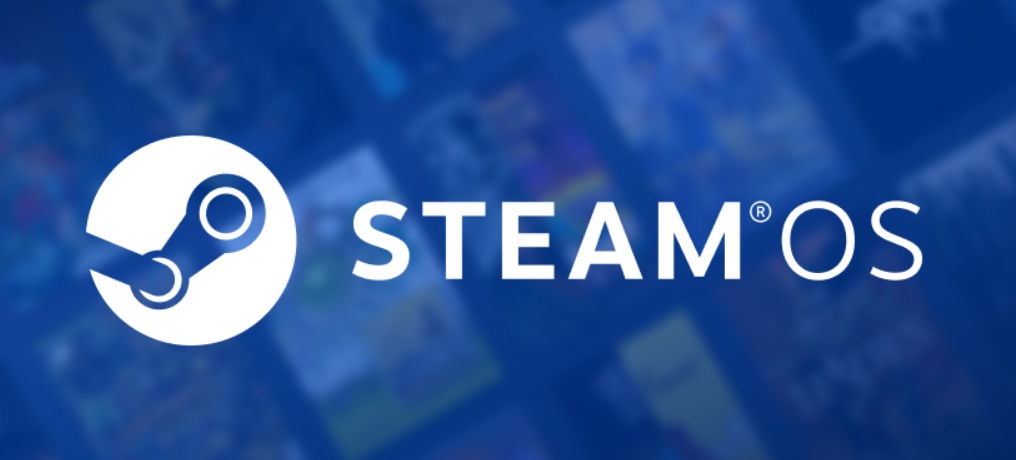SteamOS 3.7 brings Valve’s gaming OS to other handhelds and generic AMD PCs
steam machines are back
SteamOS 3.7 brings Valve’s gaming OS to other handhelds and generic AMD PCs
Focus is currently on AMD-based PCs with hardware similar to the Steam Deck.
Andrew Cunningham
–
May 23, 2025 11:28 am
|
29
Credit:
Valve
Credit:
Valve
Story text
Size
Small
Standard
Large
Width
*
Standard
Wide
Links
Standard
Orange
* Subscribers only
Learn more
Valve is releasing version 3.7 of SteamOS to the general public, and among the routine updates and changes is a big one: This is the SteamOS release that finally adds official support for some kinds of PC hardware other than Valve's own Steam Deck.
Valve mentions certain specific handhelds as having either "official" or "improved support," including the Asus ROG Ally, the Lenovo Legion Go, and the Lenovo Legion Go S. It also includes directions for configuring the original Legion Go and ROG Ally for SteamOS installation. But Valve says that only the Steam Deck and Legion Go S have fully baked SteamOS support.
The release claims to run on "other AMD powered handhelds" more broadly, implying that most third-party handheld PCs with Ryzen Z1 or Z2-series processors ought to support at least some basic functionality. Other all-AMD desktops and laptops have a decent shot at being supported, too.
It was previously possible to get a SteamOS-like experience on third-party hardware using a community-maintained distribution like Bazzite, but at least some hardware will now be able to get SteamOS right from the source. This update comes just a couple of weeks after Valve announced a new "SteamOS Compatible" label for games that would be displayed separately from Steam Deck compatibility information.
AMD-only, for now
If you want there to be a chance that your desktop or laptop will work with SteamOS, it will have to be all-AMD on the inside.
Credit:
Andrew Cunningham
To try SteamOS on your hardware, Valve's two hard-and-fast requirements are "AMD hardware" and an NVMe SSD. The hardware requirement likely refers to, collectively, the CPU, GPU, and chipset, and possibly also the RZ-series Wi-Fi and Bluetooth modules that are often paired with AMD systems. You'll also need to disable Secure Boot on your PC. This is normally enabled by default since it's an installation requirement for Windows 11, so you'll want to refer to your manufacturer's documentation to figure out how to turn it off.
Valve's instructions will walk you through downloading a SteamOS recovery image and copying it to a USB drive using either the Rufus toolor Balena Etcher. After turning Secure Boot off, you should be able to boot from the USB drive and install SteamOS as you would on a regular Steam Deck.
Note that there's no simple, officially supported way to dual-boot SteamOS and Windows; if you decide to turn your handheld, laptop, or desktop into a new Steam Machine, the only way to make it back into a Windows PC is to re-enable Secure Boot and install a fresh copy from another USB drive.
The SteamOS 3.7 updatealso includes a bunch of other updates to the underlying software: version 6.11 of the Linux kernel, "a newer Arch Linux base," version 6.2.5 of the Plasma interface in desktop mode, new Mesa graphics drivers, and various other tweaks and bug fixes.
A second act for SteamOS
The original version of SteamOS was designed to be widely compatible with all kinds of PC hardware and was available both from major PC manufacturers and as a standalone OS that you couldinstall on custom, self-built PCs. But these computers and that version of SteamOS mostly flopped, at least in part because they only ran a small subset of games that natively supported Linux.
The current version of SteamOS launched with more modest aims as the first-party operating system for a single piece of hardware. But by focusing on the game compatibility problem first and leading the way with category-defining hardware, Valve has actually built a much stronger foundation for the current version of SteamOS than it did for the original.
That doesn't make SteamOS a drop-in replacement for Windows—without strong support for Intel or Nvidia hardware, it's not a great candidate for the majority of gaming PCs, or even Intel-powered gaming handhelds like the MSI Claw A1M. And Windows is set up to be a multi-purpose general-use operating system in ways that SteamOS isn't; Valve still says that, despite the presence of desktop mode, "users should not consider SteamOS as a replacement for their desktop operating system." But for certain kinds of systems that are primarily used as gaming PCs, SteamOS is a real contender.
Andrew Cunningham
Senior Technology Reporter
Andrew Cunningham
Senior Technology Reporter
Andrew is a Senior Technology Reporter at Ars Technica, with a focus on consumer tech including computer hardware and in-depth reviews of operating systems like Windows and macOS. Andrew lives in Philadelphia and co-hosts a weekly book podcast called Overdue.
29 Comments
#steamos #brings #valves #gaming #other
SteamOS 3.7 brings Valve’s gaming OS to other handhelds and generic AMD PCs
steam machines are back
SteamOS 3.7 brings Valve’s gaming OS to other handhelds and generic AMD PCs
Focus is currently on AMD-based PCs with hardware similar to the Steam Deck.
Andrew Cunningham
–
May 23, 2025 11:28 am
|
29
Credit:
Valve
Credit:
Valve
Story text
Size
Small
Standard
Large
Width
*
Standard
Wide
Links
Standard
Orange
* Subscribers only
Learn more
Valve is releasing version 3.7 of SteamOS to the general public, and among the routine updates and changes is a big one: This is the SteamOS release that finally adds official support for some kinds of PC hardware other than Valve's own Steam Deck.
Valve mentions certain specific handhelds as having either "official" or "improved support," including the Asus ROG Ally, the Lenovo Legion Go, and the Lenovo Legion Go S. It also includes directions for configuring the original Legion Go and ROG Ally for SteamOS installation. But Valve says that only the Steam Deck and Legion Go S have fully baked SteamOS support.
The release claims to run on "other AMD powered handhelds" more broadly, implying that most third-party handheld PCs with Ryzen Z1 or Z2-series processors ought to support at least some basic functionality. Other all-AMD desktops and laptops have a decent shot at being supported, too.
It was previously possible to get a SteamOS-like experience on third-party hardware using a community-maintained distribution like Bazzite, but at least some hardware will now be able to get SteamOS right from the source. This update comes just a couple of weeks after Valve announced a new "SteamOS Compatible" label for games that would be displayed separately from Steam Deck compatibility information.
AMD-only, for now
If you want there to be a chance that your desktop or laptop will work with SteamOS, it will have to be all-AMD on the inside.
Credit:
Andrew Cunningham
To try SteamOS on your hardware, Valve's two hard-and-fast requirements are "AMD hardware" and an NVMe SSD. The hardware requirement likely refers to, collectively, the CPU, GPU, and chipset, and possibly also the RZ-series Wi-Fi and Bluetooth modules that are often paired with AMD systems. You'll also need to disable Secure Boot on your PC. This is normally enabled by default since it's an installation requirement for Windows 11, so you'll want to refer to your manufacturer's documentation to figure out how to turn it off.
Valve's instructions will walk you through downloading a SteamOS recovery image and copying it to a USB drive using either the Rufus toolor Balena Etcher. After turning Secure Boot off, you should be able to boot from the USB drive and install SteamOS as you would on a regular Steam Deck.
Note that there's no simple, officially supported way to dual-boot SteamOS and Windows; if you decide to turn your handheld, laptop, or desktop into a new Steam Machine, the only way to make it back into a Windows PC is to re-enable Secure Boot and install a fresh copy from another USB drive.
The SteamOS 3.7 updatealso includes a bunch of other updates to the underlying software: version 6.11 of the Linux kernel, "a newer Arch Linux base," version 6.2.5 of the Plasma interface in desktop mode, new Mesa graphics drivers, and various other tweaks and bug fixes.
A second act for SteamOS
The original version of SteamOS was designed to be widely compatible with all kinds of PC hardware and was available both from major PC manufacturers and as a standalone OS that you couldinstall on custom, self-built PCs. But these computers and that version of SteamOS mostly flopped, at least in part because they only ran a small subset of games that natively supported Linux.
The current version of SteamOS launched with more modest aims as the first-party operating system for a single piece of hardware. But by focusing on the game compatibility problem first and leading the way with category-defining hardware, Valve has actually built a much stronger foundation for the current version of SteamOS than it did for the original.
That doesn't make SteamOS a drop-in replacement for Windows—without strong support for Intel or Nvidia hardware, it's not a great candidate for the majority of gaming PCs, or even Intel-powered gaming handhelds like the MSI Claw A1M. And Windows is set up to be a multi-purpose general-use operating system in ways that SteamOS isn't; Valve still says that, despite the presence of desktop mode, "users should not consider SteamOS as a replacement for their desktop operating system." But for certain kinds of systems that are primarily used as gaming PCs, SteamOS is a real contender.
Andrew Cunningham
Senior Technology Reporter
Andrew Cunningham
Senior Technology Reporter
Andrew is a Senior Technology Reporter at Ars Technica, with a focus on consumer tech including computer hardware and in-depth reviews of operating systems like Windows and macOS. Andrew lives in Philadelphia and co-hosts a weekly book podcast called Overdue.
29 Comments
#steamos #brings #valves #gaming #other
·30 Visualizações





